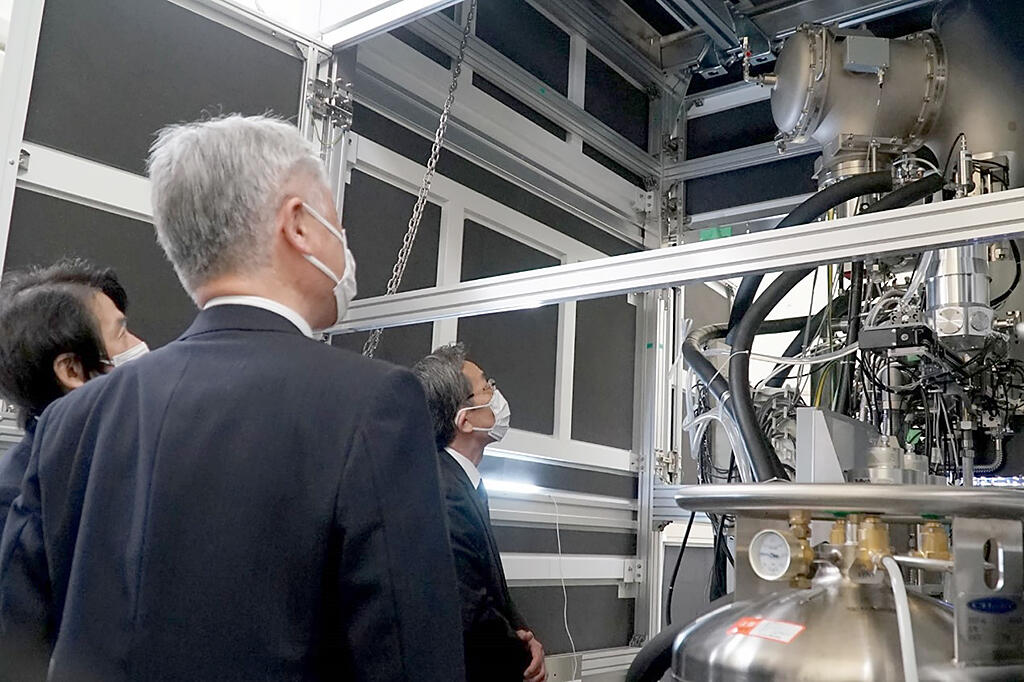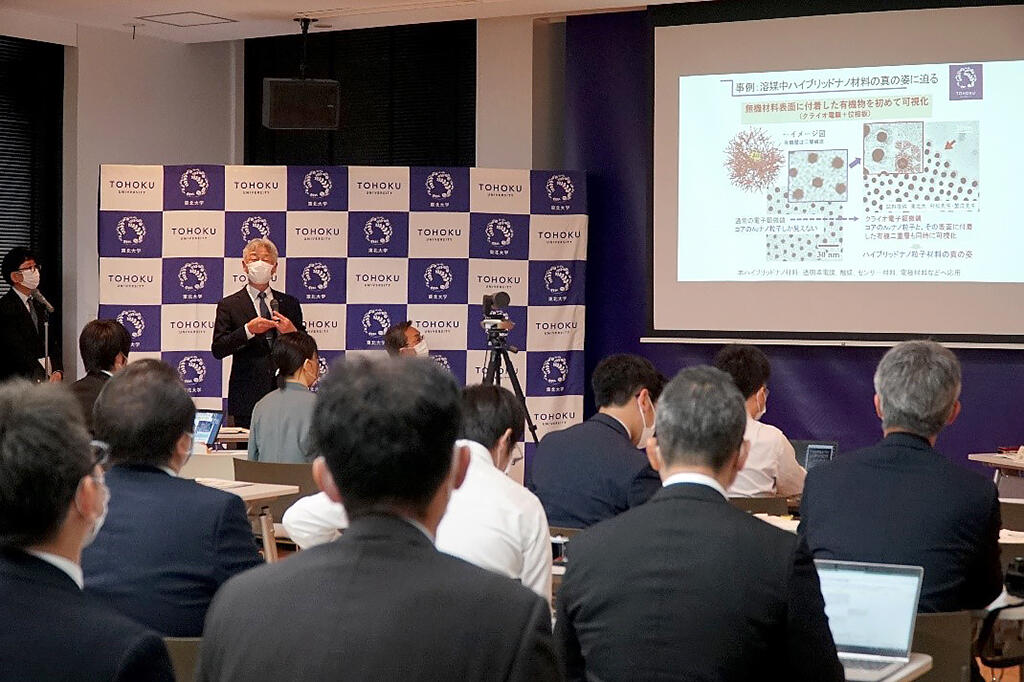The Institute of Multidisciplinary Research for Advanced Materials (IMRAM) at Tohoku University has installed an AI-based cryo-electron microscope system (manufactured by JEOL) at its Katahira campus. The microscope is now available for shared use within and outside the university. The system enables the visualization of various samples sized from nano to macroscopic. It is expected to accelerate the development of new materials and drug discovery through shared use with the next-generation synchrotron radiation facility currently under construction at the university's Aobayama New Campus. Prior to joint-use commencing, an unveiling ceremony was held on June 15, and tours of the microscope were provided.

Provided by Tohoku University
The synchrotron radiation facility (nicknamed "Nano Terrace"), currently under construction at Tohoku University's Aobayama New Campus, is scheduled to start operating in December 2023. Although it could be referred to as a giant microscope, it cannot measure materials smaller than a micron. However, since electron beams can be used to make measurements, IMRAM has embarked on developing a measurement infrastructure to provide a one-stop solution in collaboration with this next-generation facility.
The microscope's cryo-electron microscope (cryo-EM) system freezes the solution containing the sample and turns it into thin amorphous (glass-like) ice. It is then observed by the electron microscope while it is cooled with liquid nitrogen (minus 196°C or lower). This cooling reduces damage to the sample caused by electron irradiation. This method makes it possible to capture hydrogen atoms with a resolution of around 1Å, which had been difficult with X-rays.
However, there have been many failures when performing semi-automated measurements of conventional single-particle analysis using cryo-electron microscopy and electron 3D crystallography. Improving throughput has also been a challenge. YoneoLocr, developed by Professor Koji Yonekura from IMRAM (also Group Director of the RIKEN Center for Synchrotron Radiation Science), uses deep learning to control an electron microscope while identifying sample shape and determining data quality. Having an AI learn to mimic human operations has eliminated failures in automated measurements of single-particle analysis and electron diffraction data. It can automatically take measurements of high-quality data without human supervision.
For example, with prior cryo-EM techniques, large amounts of data had to be acquired overnight or over several days. For difficult samples, a human operator had to spend between 12 hours and several days coordinating the imaging. AI measurements can reduce human operations to 10 to 30 minutes.
Although cryo-EM has conventionally been limited to structural studies of proteins, this newly introduced system can measure non-biological materials, such as organic microcrystals and organic/inorganic hybrid materials. After the completion of the next-generation synchrotron radiation facility, it will allow for both hard and soft materials to be observed.
Masami Terauchi, Director of IMRAM, said, 'Electron microscopy research has mainly focused on hard materials, but we decided to introduce this system believing that establishing a next-generation synchrotron radiation facility will expand the scope of our research to soft materials such as proteins. We are currently building an academic organization that can solve problems that meet the needs of society, not just be used by researchers within the university.'

Provided by Tohoku University
Journal Information
Publication: Communications Biology
Title: Machine learning-based real-time object locator/evaluator for cryo-EM data collection
DOI: 10.1038/s42003-021-02577-1
This article has been translated by JST with permission from The Science News Ltd.(https://sci-news.co.jp/). Unauthorized reproduction of the article and photographs is prohibited.




